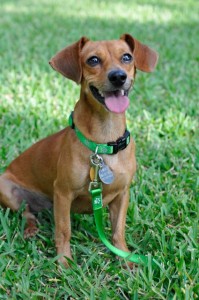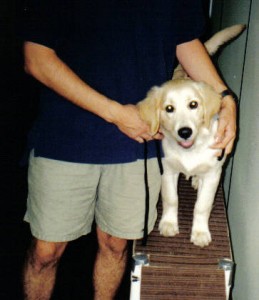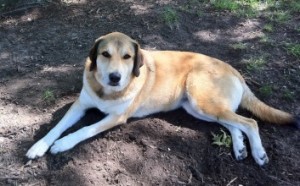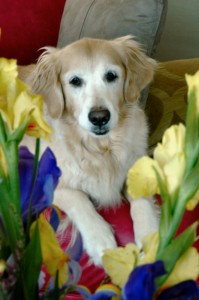Michael Baugh CPDT-KA, CDBC
Good dog trainers know we don’t teach dogs to do anything they don’t already know how to do. That may sound like nonsense, but it’s true. Your dog already knows how to walk beside you, and come to you. He also knows how to stay put and lay down. He knows how to sit too. The trick of training your dog is to teach him to do those things a lot, in all kinds of situations, when you ask for the behavior.
 So yes, it’s true, sit happens. It happens all the time. In fact, most of my students have already taught their dog to sit on a verbal cue by the time they meet me. But here’s the rub. The dog will sit when asked so long as we’re inside, and the person is facing the dog, and (by the way) nothing much else is going on at the time. The question we really want to ask isn’t does your dog know sit? It’s how strong is your dog’s sit, and in what context? There’s the rub indeed.
So yes, it’s true, sit happens. It happens all the time. In fact, most of my students have already taught their dog to sit on a verbal cue by the time they meet me. But here’s the rub. The dog will sit when asked so long as we’re inside, and the person is facing the dog, and (by the way) nothing much else is going on at the time. The question we really want to ask isn’t does your dog know sit? It’s how strong is your dog’s sit, and in what context? There’s the rub indeed.
Sit can be used to remedy dozens of problems, including jumping on people (he sits instead), bolting outdoors (the dog is sitting not running), stealing things off counters (can’t do it if he’s sitting), and chasing your kids (impossible if you’ve asked him to sit instead). Achieving these goals is very doable, but we need to start with the basics. Never give your dog the final exam before you’ve taught him the material. That’s just not fair.
It’s not about the word. Start teaching sit by temporarily taking the word out of your vocabulary. Instead, every time you see your dog sit say “yes” and give him a delicious bit of healthy food. Once he sits, take a few steps backwards and see if he follows you and sits again. Say “yes” and treat him again. This is called capturing, like catching a bit of action on film (behaviors are actions). Do this over and over, so that your dog gets hooked on sitting. Every time he sits, after all, something great happens.
Name it. When your dog is thoroughly addicted to sitting for you, name the action. That’s right, when you are 95% sure he’s going to do it anyway you are going to cue your dog to “sit.” This seems backwards but it’s not. Verbal cues (they used to call them commands) are not directions to do something; they are permission to do something. Your dog is already begging to sit for you. Now the word is going to give him the green light. Say it once. Your dog can hear you, so repeating the word sit is not useful.
Take the show on the road. Now you can start using sit as an antidote to more troubling behavior, but take it slow. Ask for sits in gradually more difficult situations, but not so difficult that your dog fails. Remember the rule about not giving the final exam too early. The best way to teach your dog is to set him up to succeed, raising the bar of difficulty a little at a time. Since your dog is working at a game he can win, he will be excited and energetic about sitting. “Yes” and treat enthusiastically. This is going to give you the opportunity to teach quick sits in more distracting settings. Forcing sits by yanking a chain or pushing on hips is less exciting and slows the process (it can also hurt your dog).
Let your imagination guide you to further challenges. What else can you teach your dog to do that is the opposite of bad behavior? Look back and notice the things your dog is already doing well. Capture that behavior and use it to crowd out the stuff you want him to stop doing. Dogs who walk calmly on leash (good behavior) don’t lunge and pull (bad behavior). Dogs who eliminate outside (good) don’t do it inside (bad). Dogs who lay quietly on their beds with their Kong Toy (good) don’t beg at the table (bad). You get the picture. It’s all a matter of replacing the bad with the good. Add to that, it’s a great way to build a relationship with your dog. And isn’t that why you got a dog in the first place?



